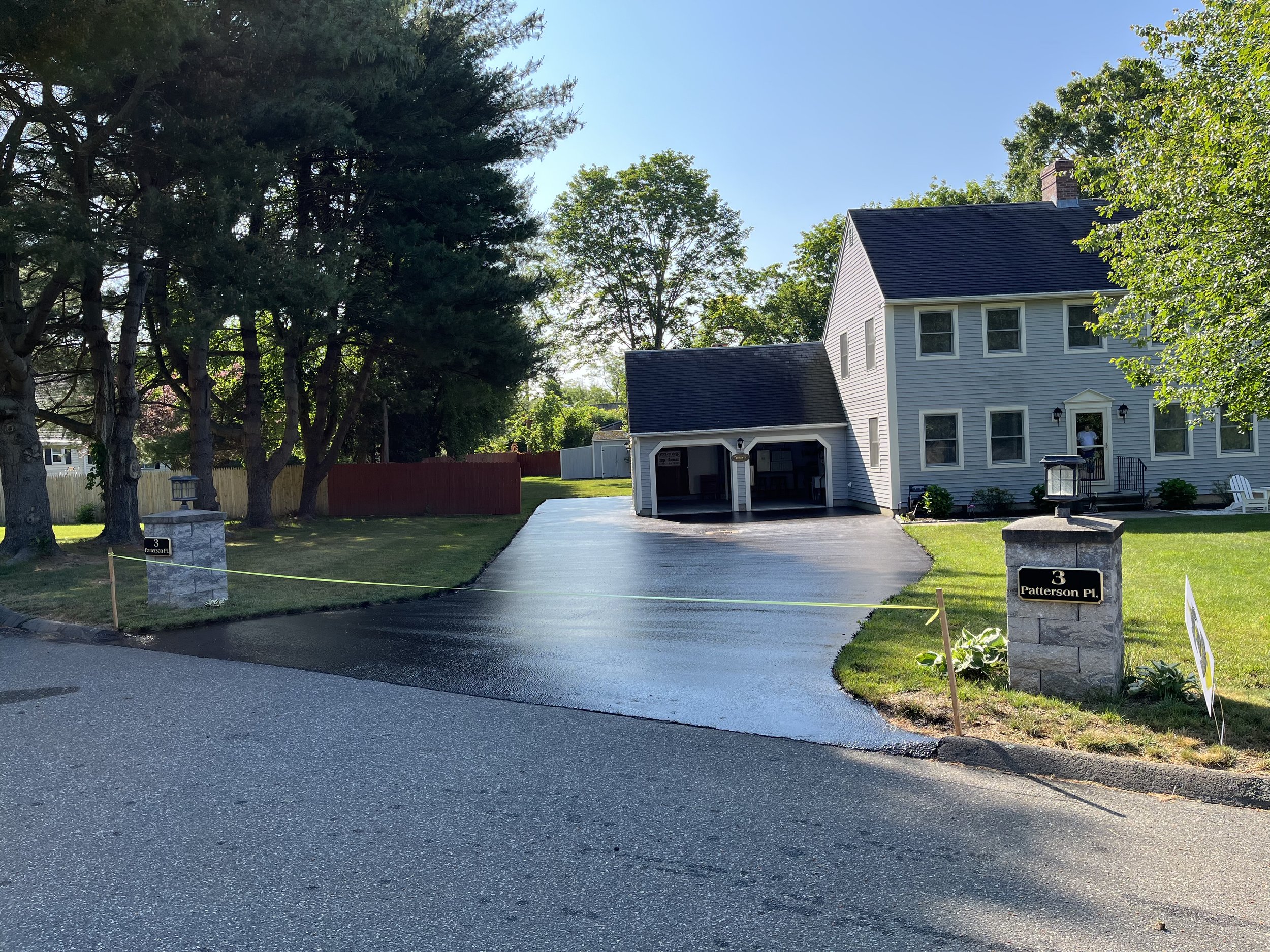Rejuvenate Your Home with Regrading and Asphalt Sealing Techniques
Rejuvenate Your Home with Regrading and Asphalt Sealing Techniques
Blog Article
Hot Mix Asphalt: A Lasting Solution for Sidewalk
Hot Mix Asphalt (HMA) has actually arised as a leading lasting selection for sidewalk services, offering a myriad of innovative modern technologies and ecological advantages. As the demand for environmentally friendly building methods expands, exploring the nuances of HMA's sustainability can offer valuable understandings right into the future of sidewalk services.
Ecological Advantages of Hot Mix Asphalt

Additionally, Warm Mix Asphalt assists to mitigate metropolitan warmth island impacts. Its dark shade soaks up sunshine, minimizing the quantity of warm mirrored back into the environment contrasted to lighter-colored pavements. This can decrease ambient temperatures in metropolitan locations, decreasing the need for air conditioning and eventually lowering energy usage.
Furthermore, Warm Mix Asphalt adds to boosted stormwater management. Its porous nature enables water to reenergize and penetrate the sidewalk groundwater supplies, reducing overflow and the danger of flooding. These ecological advantages make Warm Mix Asphalt a lasting selection for paving roads and highways.
Energy Efficiency in HMA Production
Is power effectiveness an important element in the production of Warm Mix Asphalt (HMA)? Energy plays a significant duty in the manufacturing of HMA, impacting both cost and ecological sustainability. One crucial element of energy performance in HMA production is the usage of warm mix asphalt (WMA) technologies.
Furthermore, improvements in plant modern technologies have led to more energy-efficient HMA manufacturing processes. By enhancing power use in HMA manufacturing, the sector can reduce its carbon impact while keeping top quality sidewalk materials.
Recyclability of Hot Mix Asphalt
The recyclability of Hot Mix Asphalt (HMA) is a crucial aspect of its sustainability and long-lasting ecological impact. HMA is one of the most recycled products in the USA, with over 100 million lots of recovered asphalt sidewalk (RAP) being recycled annually in new pavement building. Reusing HMA supplies several environmental benefits, such as reducing the need for virgin materials, lowering energy usage throughout manufacturing, and lowering the amount of waste sent to landfills.
The process of recycling HMA involves grating the existing pavement, squashing it right into smaller sized pieces, and blending it with new aggregate and asphalt binder to develop a recycled mix. On the whole, the recyclability of HMA plays a substantial duty in promoting sustainable techniques within the sidewalk industry.

Long-Term Performance of HMA
Asphalt pavements demonstrate sturdiness and resilience over a prolonged period, showing the long-lasting performance of Hot Mix Asphalt (HMA) The longevity of HMA can be credited to its capability to stand up to heavy website traffic lots, harsh weather conditions, and the effects of aging. Studies have actually revealed that properly designed and correctly constructed HMA pavements can last for 20 years or even more with normal upkeep. The trick to maximizing the long-term efficiency of HMA exists in utilizing top notch products, complying with best practices in construction, and implementing reliable upkeep techniques. Appropriate drainage, regular assessments, and prompt repair work are vital for protecting the structural honesty of HMA sidewalks in time. Additionally, advancements in HMA technology, such as using polymer-modified binders and cozy mix asphalt, have even more improved the longevity and durability of HMA pavements. By focusing on quality building and construction and upkeep practices, HMA continues to show itself as a sustainable and economical option for resilient sidewalk framework.

HMA: Sturdiness and Sustainability
Showing both durability and sustainability, Warm Mix Asphalt (HMA) has ended up being a foundation in the building and construction of durable pavement frameworks - commercial click for source parking lot paving. HMA's durability originates from its capability to endure hefty tons, rough weather, and high website traffic quantities, making it a trustworthy choice for roadways, freeways, and airport runways. The make-up of HMA, which typically consists of aggregates, binder, and filler, plays an important role in enhancing its long life and resistance to use and tear
Furthermore, HMA's sustainability hinges on its recyclability and energy-efficient production process. The ability to reuse reclaimed asphalt pavement (RAP) in new HMA combinations reduces the need for virgin materials and minimizes the environmental influence of pavement construction and maintenance. Furthermore, the power effectiveness of generating HMA lies in its reduced blending temperature levels compared to various other pavement materials, resulting in minimized power consumption and greenhouse gas discharges.
Final Thought
Finally, warm mix asphalt (HMA) uses a sustainable option for sidewalk with its eco pleasant characteristics. HMA's recyclability, energy additional resources efficiency in production, and long-lasting durability make it a green selection for roadway construction. By saving natural resources, minimizing waste, and decreasing greenhouse gas exhausts, HMA plays a crucial role in advertising sustainability in facilities growth. Its capability to minimize city warm island impacts further emphasizes its relevance in developing environmentally aware and durable sidewalk systems.
HMA is one of the most recycled materials in the United States, with over 100 million tons of reclaimed asphalt pavement (RAP) being reused yearly in brand-new pavement building.The process of recycling HMA entails milling the existing sidewalk, squashing it into smaller items, and blending it with new accumulation and asphalt binder to produce a recycled mix.Asphalt sidewalks show durability and strength over an extended duration, mirroring the long-term performance of Hot Mix Asphalt (HMA) Additionally, advancements in HMA innovation, such as the use of polymer-modified binders and warm mix asphalt, have actually additionally improved the longevity and long life of HMA pavements. visit this site The ability to recycle recovered asphalt pavement (RAP) in new HMA blends reduces the demand for virgin products and minimizes the environmental impact of pavement construction and upkeep.
Report this page